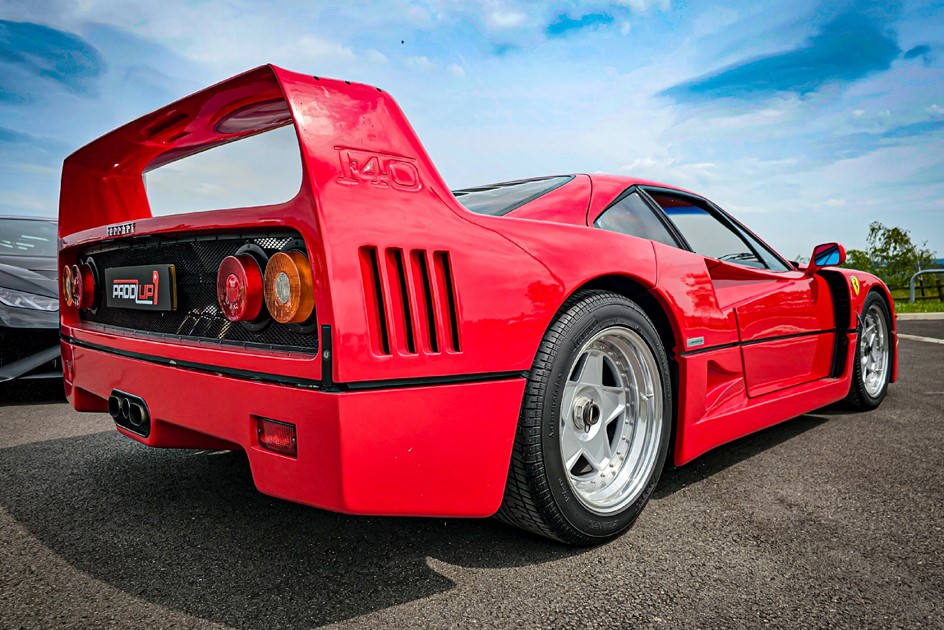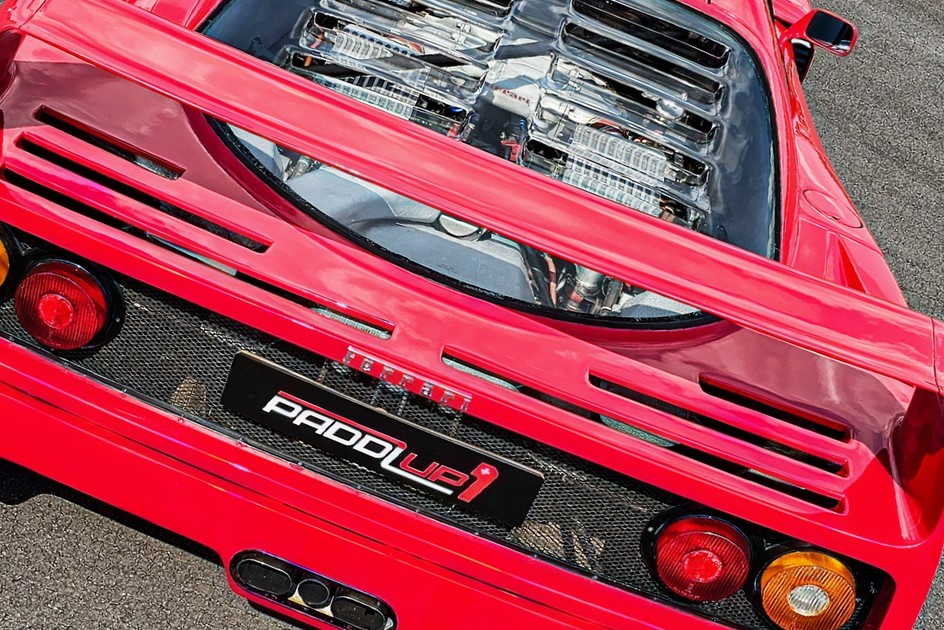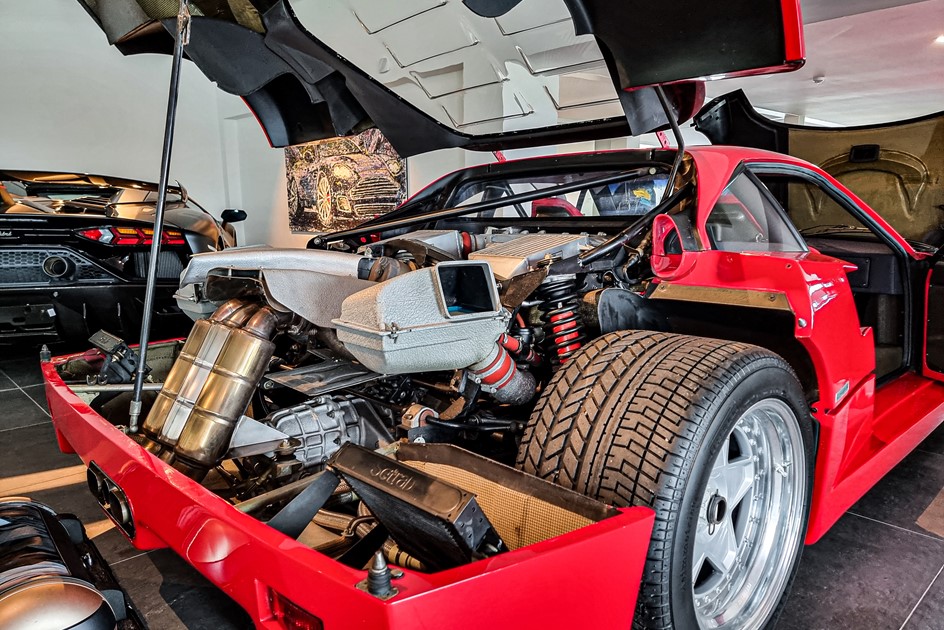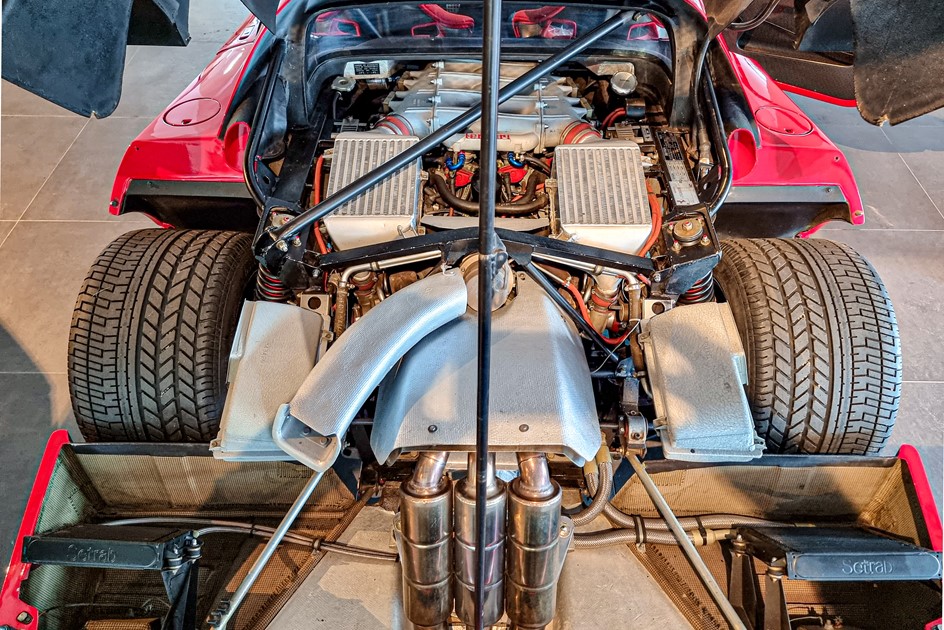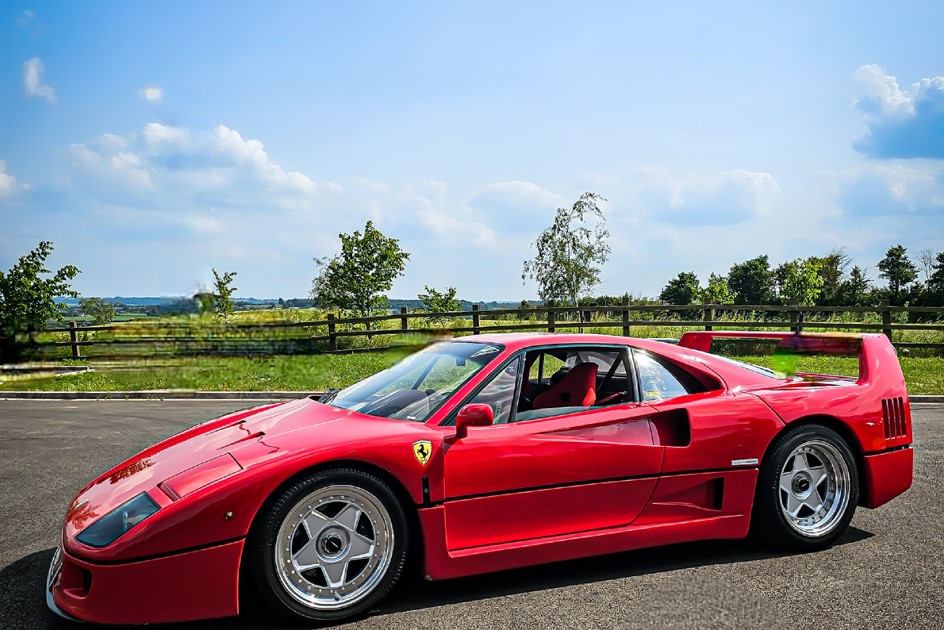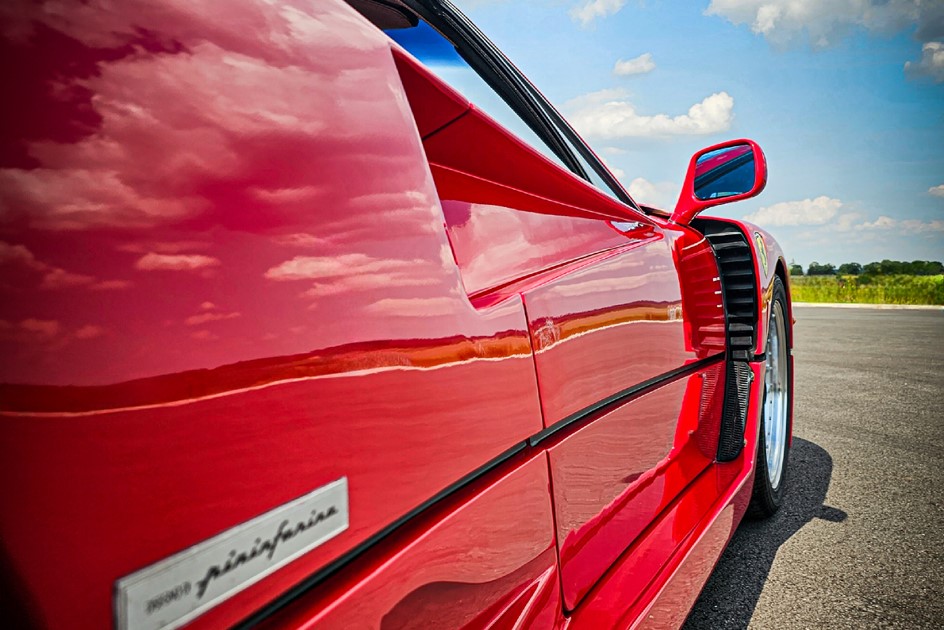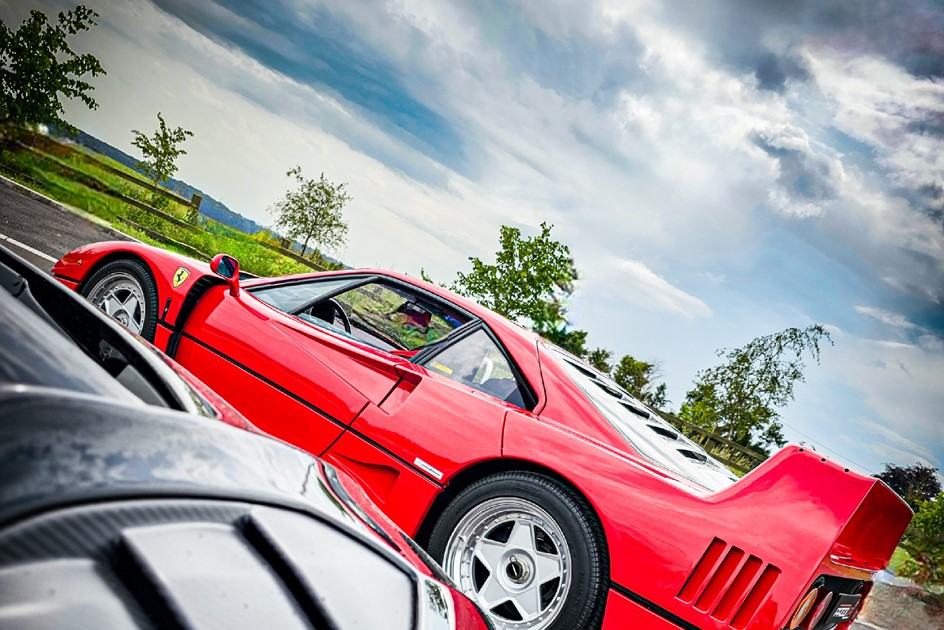Developing a legend: how the F40 realised its potential
At the time of release in 1987, the Ferrari F40 was the fastest production car in the world and was able to give its spiritual arch-nemesis, the technologically superior Porsche 959 a run for its money in almost every respect.
Perhaps rather surprisingly though, the F40’s turnaround time was short-lived indeed. The entire design, development, testing and production phases all fit into a minuscule 13-month period, a proverbial blink of an eye compared to the time scales usually associated with car production.
What then, was the genesis of this giant-killing supercar icon, what were the crucial inflection points during its creation and how did it all culminate into one of the most sought-after modern-day supercar investments on the market?
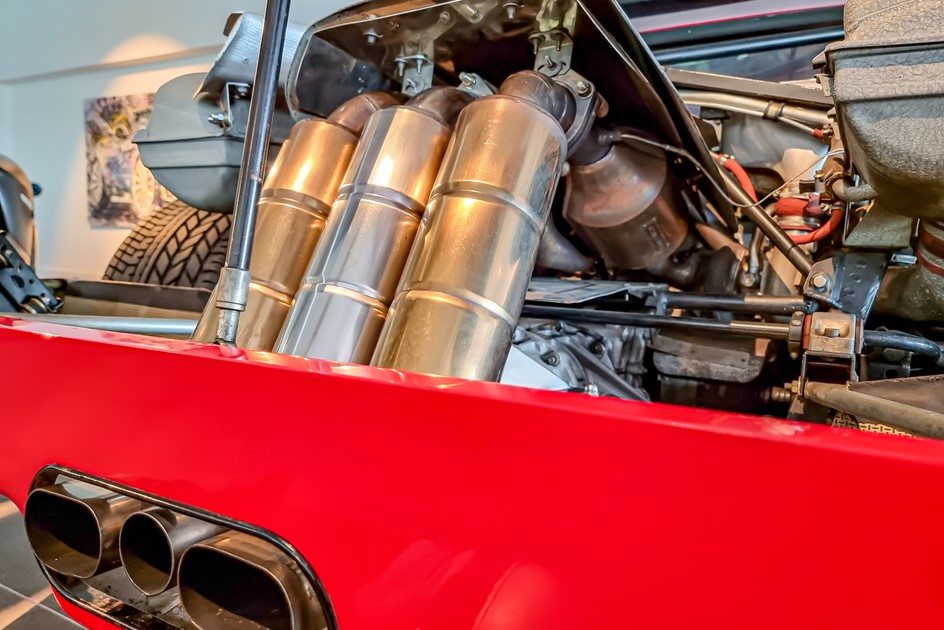
The engine
It is well documented that the F40’s engine was derived from its ‘big five’ predecessor, the 288 GTO. The twin-turbocharged V8 unit was rebuilt and enlarged from 2,855cc to 2,936cc and horsepower was increased from 400bhp to a quoted 486 bhp for the non-catalyst equipped cars, and 478bhp for the later catalyst models. It is common knowledge however, the cars actually produced nearer 500 bhp.
Early iterations of this new engine were considered to be undrivable and extensive development work with Weber-Marelli, the electronic injection system provider was carried out to improve its performance. Fiorano and its surrounding mountain roads were key locations for engine tests, while an air base in Rimini was utilised for acceleration and brake testing.
As far as turbochargers were concerned, it was a tossup between IHI and KKK units. Both the 288 and the Formula 1 cars of that era made use of the KKK option but eventually, it was decreed that the F40 would use IHIs at Chief Test Driver, Dario Benuzzi’s behest after a conflab with Enzo Ferrari himself.
A head-to-head between two prototypes was arranged, one with KKK and another with IHIs installed. With KKK engineers in attendance at Fiarno, it was unanimously decided - KKK engineers included - that the IHIs were superior.
To rid the turbos of those exhaust gasses earlier cars did without a catalyst, however in 1990 catalysts were added due to a change in emissions regulations. To the casual observer it seems the F40 uses three exhaust pipes to guide exhaust gases from each bank of cylinders when in fact it only uses two; the central pipe guides gases released from the wastegate of the turbochargers.
The F40's twin-turbocharged V8 would be Ferrari's final forced induction engine for 22 years, until the arrival of the California T in 2014.
Tyres
With the F40 producing around an additional 80 bhp and 80 lb ft of torque over the 288 GTO, a new design of tyre was required; one which could deal with the race car-level power output of the twin-turbo V8.
Head engineer of the F40 Nicola Materazzi reached out to his long-time friend Mario Mezzanotte, who happened to be Head of Development at Pirelli. The synergies between the two Italian behemoths were obvious, and after some rudimentary filing down of the rear tyres during testing, the ideal compound and tread design finally arrived, Pirelli had created and refined the original P Zero specifically for the F40. Although some cars were supplied with alternative Bridgestone and Michelin tyres the agreed preferred option was the P-Zero.
Brakes
One of the final pieces of the proverbial puzzle was the braking system. Although significant vibrations were initially an issue, engineers eventually settled on a servo-less, floating disc brake system, with which a happy medium was achieved between overall efficiency and effort on pedal input.
Exotic materials
Back in the days when it wasn’t the norm to have a carbon fibre monocoque chassis in a road-going supercar, Ferrari really pushed the boat out with the F40.
An entirely new design by Pininfarina featured a mix of Kevlar, carbon fibre and aluminium to create a strong but lightweight body - famous for the visible weave through the paintwork of some examples, helped in part by Ferrari only using 2 litres of paint on each car.
In fact, the first fifty examples left the factory featuring sliding Lexan windows, in the name of weight saving and ultimately, more performance. The remaining cars were fitted with glass wind-down windows.
The weight-saving mission of Ferrari engineers was evident; the F40 tipped the scales at a featherweight 1104kg.
Aerodynamics
As will come as no surprise to the Ferrari aficionado, Pininfarina was once again the design team behind the iconic look of the F40 and there’s no argument that it does exactly what it says on the tin. The F40’s DNA is in racing, owing to its predecessor, the 288 GTO, and that much is immediately obvious from its aggressive aerodynamic aesthetic. Ferrari wanted to ensure that the F40 had road-going bark with the on-track bite to match; Pininfarina got busy, employing intense aerodynamic testing and combined its trademark rear wing, gaping side vents and prominent rear diffuser to create a car that is as visually striking as it is arresting on the circuit.
Interior
The lightweight theme continued on the inside and those lucky enough to find themselves in one will note it's a very sparse place. The red cloth seats - available in small, medium and large - cannot be adjusted for rake and there is no steering wheel airbag. In fact you don't even get the luxury of carpet, instead a small covering sits over a small section of the exposed carbon/Kevlar weave.
No ABS. No traction control. No servo-controlled brakes. The manual, dog-leg five-speed gear shifter sits in an exposed shift gate. The dashboard offers nothing but a cloth lining, the drivers eye-line taken by the simplistic dials. A rev counter reads to 10,000 rpm while the speedometer a colossal 360 kph. Sat directly with them are water temperature and boost gauges, with three dials - oil temp and pressure, and fuel gauge - located still in sight in the centre of the dashboard.
A glove box? Forget it. Door handles? In their place you find a simple pull string nestled within the carbon door cards. Even the Kevlar is subject to weight saving, with Ferrari even leaving the sealant on show. Pure, uncomplicated, functional and race-car exciting.
Testing, testing
As was often the case, top-speed runs were conducted at Nardo. This was where each puzzle piece came together in the ultimate test for a fledgling super and the F40 didn’t disappoint. Despite some aerodynamic bias towards the rear causing lifting at speed, the F40 became the first production car to break the magic 200 mph barrier, achieving an eye-watering 201mph and the LM version went even quicker clocking 229 on the speed trap.
Learn more on our Ferrari F40 listing.


